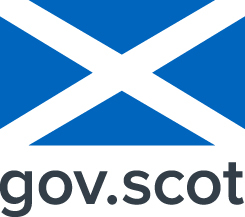FGS Target Area - Woodlands for Riparian Benefits
This dataset identifies the target areas where a higher Forestry Grant Scheme payment rate is available for creation of new riparian woodlands.
The Woodlands for Riparian Benefits target area dataset identifies locations where riparian woodland creation can provide multiple benefits, which include: reducing river temperatures for Wild Salmon populations; slowing flows to support flood risk management, improving water body status under River Basin Management Plans (e.g. diffuse pollution, ecology, chemistry and physical condition), and improving biodiversity.
In order to qualify for the higher Forestry Grant Scheme payment rate the woodland must support river management, water quality, flood mitigation and the Wild Salmon Strategy and these benefits must be clearly identified. The higher payment rates will apply to the following woodland creation options: Native Scots Pine, Native Upland Birch, Native Broadleaves and Native Low-density Broadleaves.
The grant rate will be dependent on the extent to which an application is within the target area. For example, if 50 percent or more of each eligible option area within your application is within the target area, then the whole eligible option area will receive the higher payment rate. If less than 50 percent of each eligible option area within your application is within the target area, then the higher payment rate will not be applied. Please note that within any of the target areas the capital items such as fences and gates will remain at the standard payment rates.
The target area was created by buffering sections of river identified by James Hutton Institute's RIVERTOOL (Riparian Vegetation Ecosystem Services-based Ranking Tool) as providing most benefit from riparian planting. The target area is a simple buffer and does not exclude unplantable areas such as the river itself, roads, or existing woodland. Approximately 25% of the overall target area is covered by these unplantable features.
Default
Identification info
- Alternative title
-
FGS Target Woodlands for Riparian Benefits
- Metadata Language
- English
- Character set
- UTF8
- Dataset Reference Date (Creation)
- 2023-07-12
- Dataset Reference Date (Revision)
- 2023-07-12
- Identifier
- S_FGS_TARGET_AREA_RIPARIAN_BENEFITS
- Presentation form
- Digital map
- Maintenance and update frequency
- Not planned
- Keywords
-
-
Forest Management
-
Grant Schemes
-
Planning
-
Environment
-
Landscape
-
Woodland
-
FGS
-
Forestry
-
Afforestation
-
Riparian
-
River
-
-
GEMET - INSPIRE themes, version 1.0
-
-
Land use
-
- Limitations on Public Access
- Other restrictions
- Other constraints
-
No limitations on public access
- Use constraints
- License
- Other constraints
-
Please ensure that the following acknowledgement is displayed on any hard copy: Data provided by Scottish Forestry [year].
- Other constraints
- Open Government Licence
- Spatial representation type
- Vector
- Denominator
- 10000
- Topic category
-
- Farming
- Biota
- Economy
- Environment
- Extent
-
GB-SCT
ISO3166-2 2007-12-13
))
Temporal reference
Temporal extent
Temporal extent
- Reference system identifier
- EPSG / OSGB 1936 / British National Grid (EPSG:27700) / 7.9
Distribution Information
Data format
- Data format
-
Name Version ESRI Shapefile
1.0
Transfer options
- Resource Locator
-
Protocol Resource Locator Name WWW:LINK-1.0-http--link
https://open-data-scotts.coishforestry.hub.arcgim/ Scottish Forestry Open Data
WWW:LINK-1.0-http--link
https://www.ruralpayments.org/topics/all-schemes/forestry-grant-scheme/woodland-creation/ FGS Option Guidance Document
Data quality info
- Quality Scope
- Dataset
- Statement
-
These target areas were created by Scottish Forestry, based on areas identified using a tool developed by James Hutton Institute (JHI) to score the level of benefits provided by riparian planting. The JHI tool is called RIVERTOOL (Riparian Vegetation Ecosystem Services-based Ranking Tool) and was developed by Alessandro Gimona, Marie Castellazzi, Bethany Wilkins, and Andrea Baggio Compagnucci. You can find more information at https://storymaps.arcgis.com/stories/f49964c9d7344ac4a6056cbde3122946
Two outputs from the tool were used. First, in each region, the 25% of the rivers with the highest score when all criteria were considered and equally weighted was taken. Then the top 25% for only river shading was taken and merged with the first output. These combined areas were used as the basis of the target area.
Where possible, the target area is based on buffering the OS Open Rivers network, rather than the 100m gridded tool output. The tool output areas were buffered by 101m, then OS Open Rivers were clipped to this buffer area. These river lines were then buffered by 50m plus half the river width. OS Open Rivers does not include river widths, so these were calculated for each feature as the average of widths of OS MasterMap Water Network features along the given OS Open Rivers feature.
Some of the rivers included in the JHI tool output were not included in the OS Open Rivers dataset. These areas were identified, and the gridded tool output itself was used, smoothed using positive and negative buffers. This area was then merged with the buffered rivers to create the final target area.
Dataset Attributes:
Name - Name of the feature
Metadata
- File identifier
- 0c7fa87e-00cc-4f69-9fca-ea8c00fda240 XML
- Metadata Language
- English
- Character set
- UTF8
- Resource type
- Dataset
- Metadata Date
- 2023-07-11T16:20:38
- Metadata standard name
- UK GEMINI
- Metadata standard version
-
2.3
Point of contact
- Individual name
-
GIS
- Organisation name
-
Scottish Forestry
- Position name
-
Head of Geo-Information Services
- Delivery point
-
Saughton House, Broomhouse Drive
- City
-
Edinburgh
- Administrative area
-
City of Edinburgh
- Postal code
-
EH11 3XD
- Country
-
United Kingdom
- Electronic mail address
-
geoinformationservices@forestry.gov geoinformationservices@forestry.gov.scot
- Role
- Point of contact
 SpatialData.gov.scot
SpatialData.gov.scot